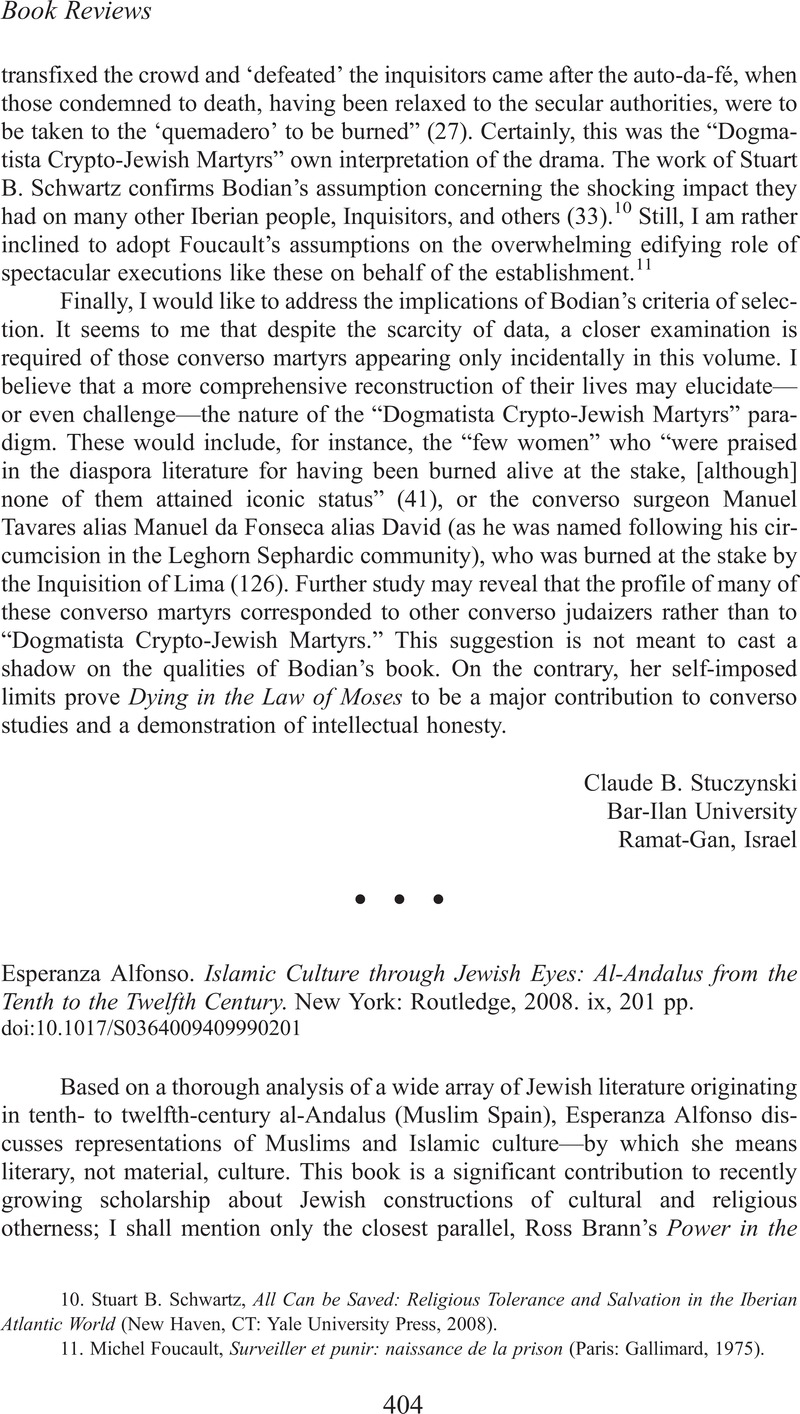No CrossRef data available.
Article contents
Esperanza Alfonso. Islamic Culture through Jewish Eyes: Al-Andalus from the Tenth to the Twelfth Century. New York: Routledge, 2008. ix, 201 pp.
Published online by Cambridge University Press: 08 December 2009
Abstract

- Type
- Book Reviews: Medieval Jewish Culture
- Information
- Copyright
- Copyright © Association for Jewish Studies 2009
References
1. Brann, Ross, Power in the Portrayal: Representations of Jews and Muslims in Eleventh- and Twelfth-Century Islamic Spain (Princeton, NJ: Princeton University Press, 2002)Google Scholar. Alfonso, , in addition, refers to Tova Rosen's analysis of gendered othering: Unveiling Eve: Reading Gender in Medieval Hebrew Literature (Philadelphia: University of Pennsylvania Press, 2003)Google Scholar; see also Jacobs, Martin, Islamische Geschichte in jüdischen Chroniken: Hebräische Historiographie des 16. und 17. Jahrhunderts (Tübingen: Mohr Siebeck, 2004)Google Scholar.
2. By contrast, compare Kogan's, Barry S. recent characterization of the Kuzari: “While the work is generally regarded as apologetic in character, it is no mere polemic. Rather, its theological defense of Judaism is deeply informed by philosophy, and respectful of both its integrity and methods” (“Judah Halevi and His Use of Philosophy in the Kuzari,” in The Cambridge Companion to Medieval Jewish Philosophy, ed. Frank, Daniel H. and Leaman, Oliver [Cambridge: Cambridge University Press, 2003], 111)CrossRefGoogle Scholar.




